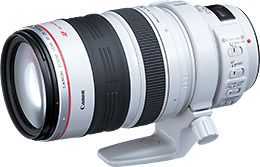Strong winds can make it especially hard to capture sharp, steady images. Kenji Kato shares how he nailed this shot of the famous drift ice at the Shiretoko Peninsula in Hokkaido. (Reported by: Kenji Kato)

EOS 5DS R/ EF28-300mm f/3.5-5.6L IS USM/ FL: 28mm/ Shutter-priority AE (f/22, 1/1,250 sec, EV-1.0)/ ISO 400/ WB: Auto
Keep an eye on camera shake and adjust your shutter speed appropriately
Taking photos of the spectacular scenery from high up in the sky would require, depending on the conditions, either a helicopter or a small plane. Before takeoff, it is essential to monitor the weather conditions and study the wind and cloud movements carefully.
The aircraft usually flies at a speed of about 200km/h, but try decreasing the speed to about 100km/h before you attempt to shoot. Tripods are not usable as the vibrations from the aircraft will transfer to the tripod body and cause it to shake. When snapping photos of the beautiful planet from high above, blurring from camera shake is usually the biggest source of your worries. As such, adjust the shutter speed as the situation warrants.
A magnificent pattern in the ocean created by drift ice
In winter, drift ice surrounds the peninsular of Shiretoko. This spectacle, which could not be seen from ground level, was so vast that it was hard to capture in its entirety. Using shutter-priority AE mode, I set my shutter speed to 1/1,250 second to avoid blurred shots.
With the aircraft in position above the Shiretoko mountain range, we proceeded towards the cape of Shiretoko. When it came to deciding on my composition, I framed the image such that the mountains in the far back were visible as well in order to have some depth in the photo. Taking care to time the shoot at the right moment when the light was falling beautifully over the cape and the drift ice, and also to ensure the overall balance of the elements, I captured the entire scene with the 28mm wide end of my lens.
TIP 1: Shoot in shutter-priority AE at 1/1,000 second or faster
When weather conditions and strong winds cause the aircraft to vibrate, these vibrations will be transferred to the camera and your body as well. This is especially so when shooting at 50 megapixels, as blur from camera shake can become rather obvious even with a shutter speed of 1/800 second. In these conditions, we usually want shutter speeds of faster than 1/1,000 second, so I set the shutter speed to 1/1,250 second.

1/1,000 sec

1/500 sec
As an example, let’s look at these two aerial photos of the roof tiles of Himeji Castle shot on a separate occasion. After enlarging both photos, we can see that the photo shot at 1/500 second has some rather obvious blurring.
TIP 2: Use a rubber string to hang the camera from the aircraft ceiling
In the past, I either used a monopod or shot handheld. However, one good method to prevent camera shake does not involve mounting the camera onto the aircraft, but rather using a rubber string with one end hooked to the frame of the aircraft and the other end onto the camera. The elasticity of the rubber string will help absorb most of the vibrations and prevent blurring from camera shake.

How hang the camera
Tie a rubber string to the center of the camera and lens. Attach the other end of the string to the frame of the aircraft. Make sure that you can adjust the length of the string quickly and easily, and that there is room to shift the camera to the left and right.
Shooting location: Shari, Shari County, Hokkaido
Time of shoot: Late February, 11a.m
A direct flight via a Cessna plane to Shiretoko Peninsular from Memanbetsu Airport takes about 30 minutes. Once you are up in the sky, however, proper cold wear and gloves are essential to protect yourself from the frigid cold. Also, you might experience airsickness as well from the constant shaking of the aircraft due to strong winds. Lastly, prepare 3 spare batteries before departing just in case your battery runs out of power during the course of the 90 minute flight.
For more articles on photography, check out the following articles:
The Allure of Aerial Photography: Capturing Unpredictable Landscapes Under Challenging Conditions
Strengthening the Bond of Two Nations through Aerial Photography Exhibition – Aspiring New Zealand
Shooting from a Bird’s Eye View
Receive the latest update on photography news, tips and tricks.
Be part of the SNAPSHOT Community.
Sign Up Now!About the Author
A monthly magazine that believes that enjoyment of photography will increase the more one learns about camera functions. It delivers news on the latest cameras and features and regularly introduces various photography techniques.
Published by Impress Corporation
Born in Yokohama City, Kanagawa, Kato studied commercial photography at Kanda Studio in Japan and subsequently became a freelancer. In 1999, he started out aerial photography and has since clocked more than 6500 flight hours, which adds up to over 200 days in the air. He also held photography exhibitions titled “From the Skies of Japan” in 2006 and 2009. Kato continues to seek and photograph undiscovered Japanese landscapes from high up in the sky.


































